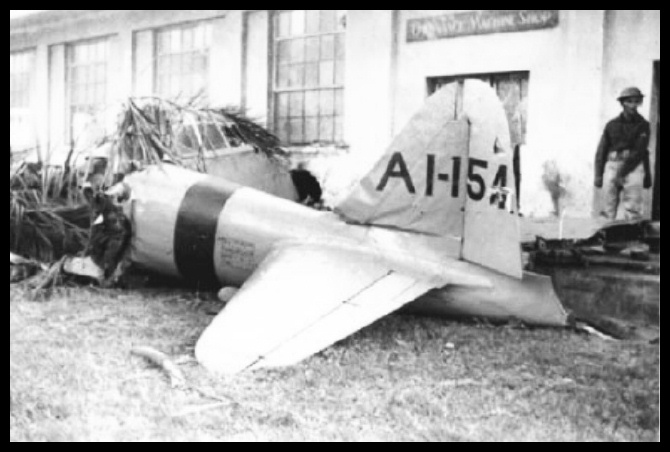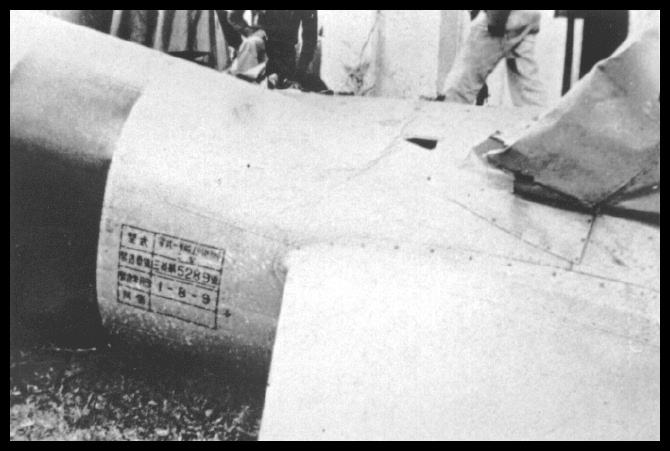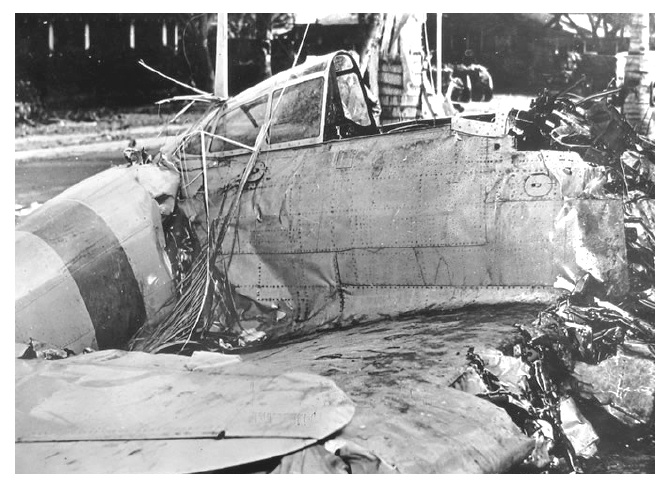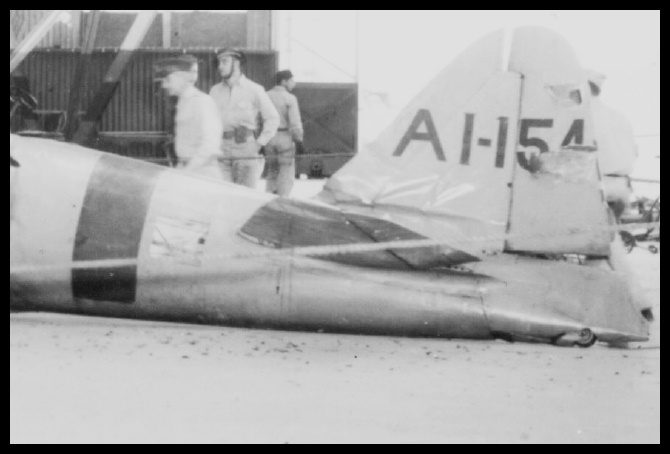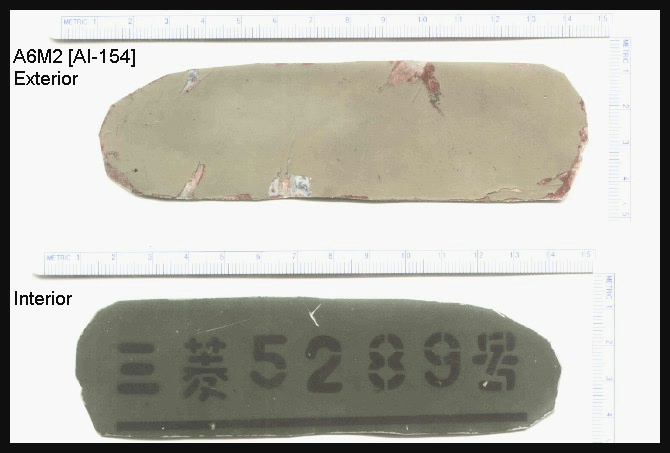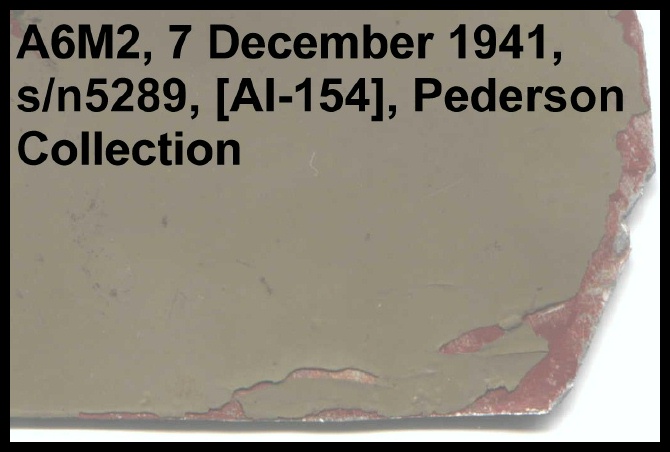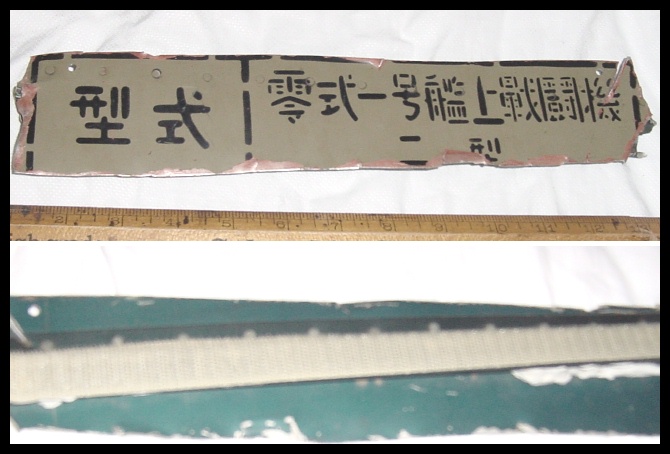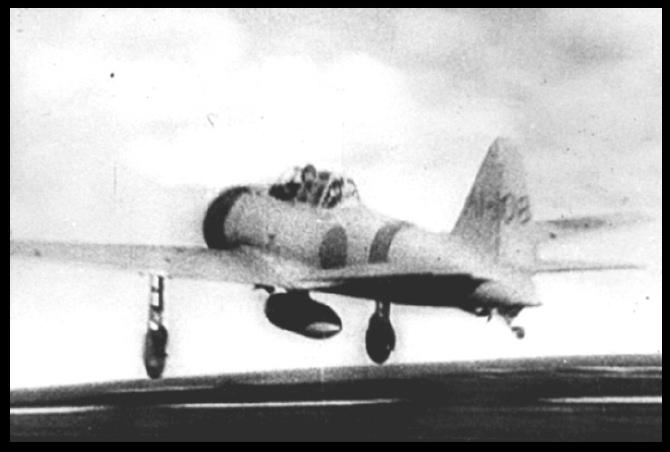The Imperial Japanese Naval Air Forces lost a total of twenty-nine aircraft missing in action or confirmed as crashed during the attack on Pearl Harbor, Hawaii, 7 December 1941. Nine Mitsubishi Type Zero carrier-based fighters (Reisen or “Zero”), fifteen Aichi Type 99 carrier-based bombers (“KanBaku,” later code-named “Val”), and five Nakajima Type 97 carrier-based attack bombers (“KanKo,” later code-named “Kate”), failed to return to their mother ships, their having been shot-down, accidentally crashed, or simply lost at sea attempting to find their way back to their mobile bases. This study is the result of research into the missions and the circumstances resulting in the loss of each of the twenty-nine aircraft and the fates of their crews.
The actual fate of many crews is still not known beyond all doubt, however, new evidence, factual as well as circumstantial, is presented and documented. New material may come to light in the future. The following material is what has been discovered to date.
Part I:
Kyu-ki no Reisen: The Nine Zero Fighters Lost at Pearl Harbor
There were nine Zero pilots and aircraft lost during the Pearl Harbor attack 7 December 1941. Three pilots were lost during the first wave attack, PO1c Takashi HIRANO, from the carrier AKAGI along with KAGA-based pilots PO2c Seinoshin SANO and PO2c Toru HANEDA, did not return. Six Zero fighter pilots were lost in the second wave attack, including Lt. Fusata IIDA, PO1c Shun-Ichi ATSUMI, and PO2c Saburo ISHII, all members of the same hiko shotai (element) from the carrier SORYU and all three were reported killed in combat. In addition, PO1c Shigenori NISHIKAICHI, from the carrier HIRYU, crash-landed and was killed on the island of NI’IHAU. Warrant Officer Ippei GOTO, along with his companion from the carrier KAGA, PO1c Tomio INENAGA, went missing in action. The account below is what is known about their fates.
First Strike-Wave Losses: AKAGI Air Unit, The Hirano Zero
Photograph NARA via LRA
The morning of 7 December 1941, at 0550 (0120 Tokyo time), six Imperial Japanese Navy aircraft carriers turned east into the wind (80o), approximately two hundred and twenty miles north of and bearing 10o from the Hawaiian island of Oahu. The carriers increased their speed for launch operations of the First Strike-Wave air units being used to attack the United States naval forces at Pearl Harbor and related military facilities on the island. The First Strike-Wave consisted of 183 aircraft. One hiko chutai (flight) consisted of nine Mitsubishi Type 0 Carrier Fighters (Zero’s) that were assigned to the carrier AKAGI. The AKAGI-based Zero’s were organized into three hiko shotai (elements) of three Zero’s each and the pilots were organized into the No.1 Fighter Striking Unit as follows:
No. 1 Shotai
Lt.Cmdr. Itaya, Shigeru
PO1c Hirano, Takashi
PO1c Iwama, Shinatsugu
No. 2 Shotai
Lt. Ibusuki, Masanobu
PO1c Iwashiro, Yoshio
Sea1c Hanyu, Toichiro
No. 3 Shotai
WO Osanai, Suekichi
PO2c Yaguchi, Masao
Sea1c Takasuka, Mitsuyoshi
All escort fighters were under the overall command of Lt. Comdr. ITAYA. Less than two hours after launching, the strike units made landfall near Kahuku Point on the northeast corner of Oahu. Given the signal to attack, the units divided into the different courses that would take them to their respective objectives. ITAYA led his top cover of nine Zero’s southward along the leeward slopes of the Koolau Mountain range escorting the Aichi Type 99 Carrier Bombers (KanBaku) from the carrier SHOKAKU. As the KanBaku from the SHOKAKU prepared to attack Hickam Field, U.S. Army Air Base, the ITAYA Zero’s maintained their vigil and interdicted any American aircraft they encountered.

As the first bombs began to fall on Ford Island and among the parked aircraft and hangers of Hickam Field, the ITAYA Zero’s were proceeding southward to the west of Nuuanu Pali Pass. At that moment, one of the twelve Boeing B-17 bombers assigned to the 38th and the 88th Reconnaissance Squadrons, all of which had taken off from Hamilton Field, California fifteen hours before en route to the Philippines, was rounding Diamond Head on the south shore. The copilot of this B-17 was 38th Reconnaissance Squadron member 2ndLt. Ernest L. Reid. Reid later described what he experienced that day.
We caught our first glimpse of land. It was Diamond Head, a welcome sight. We all looked forward to spending the rest of the day on the beach at Waikiki. As we approached Oahu, Lieutenant Schick began taking pictures with a small camera he had brought along.
As we passed Diamond Head, I noticed a few bursts of M fire across the landmass, off to our right. I thought some American M unit was practicing. Then I saw a flight of six pursuit ships apparently flying through a bunch of ack-ack bursts. I recall thinking that somebody on the ground was getting a little careless about where he was shooting.
It was 8:00 a.m. I remember the exact time, because I had to fill out a status report on our engines every hour on the hour.
ITAYA led his Zero’s further south and west on his mission to strafe Hickam airfield and/or John Rodgers airport. The AKAGI after-action report states that the strafing of Hickam by ITAYA began at 0800 local time. ITAYA probably spotted Reid’s B-17 as it made its way along the south shore of Oahu proceeding toward to Hickam. Reid continued his account.
My status report took a few minutes. When I again looked up, we were on a long base leg to Hickam Field. This leg took us right down the canal toward Pearl Harbor. Captain Swenson ordered me to lower the landing gear. As I did, I noticed a great deal of black smoke coming up from Pearl Harbor. There was too much ack-ack around, and I began to feel that something was wrong, although I still had no idea what it was.
I asked Captain Swenson about the smoke. He thought the islanders were burning sugarcane as he had seen them do during the last trip he made to the islands. I didn't feel too confident about that explanation because I couldn't picture burning sugarcane making such black, oily smoke. In addition, that explanation didn't account for all the shooting. We had made the flight under radio silence, but we were cleared to contact the tower. They had not answered any of our calls.
We had to continue our approach; our gas supply would soon become a problem. We were now at 600 feet and turned to our final approach. I got my first clear look at Hickam Field.
What I saw shocked me. At least six planes were burning fiercely on the ground. Gone was any doubt in my mind as to what had happened. Unbelievable as it seemed, I knew we were now in a war.
 Photograph (C) LRA Collection
As if to dispel any lingering doubts, two Japanese fighters came from our rear and opened fire.
ITAYA and his wingmen, PO1c Takashi HIRANO and PO1c Shinatsugu (or Shinji) IWAMA, closely followed by the others in string formation, began to make a run on the B-17. Reid recorded the effects of the attack.
A tremendous stream of tracer bullets poured by our wings and began to ricochet inside the ship. It began to look as though I would probably have the dubious distinction of being aboard the first Army ship shot down.
Without waiting for an order from Captain Swenson, I pushed the throttles full on, gave it full rpm, and flicked the "up" switch on the landing gear. It seemed only logical to get quickly into some nearby clouds and try to escape almost certain destruction, since we had no way of fighting back.
I had no sooner taken these steps than smoke began to pour into the cockpit. The smoke was caused by some of their tracer bullets hitting our pyrotechnics, which were stored amidships. Captain Swenson and I both realized there was now no choice but to try to land. The captain yanked the throttles off, and I popped the landing gear switch to the down position again. The wheels had only come up about halfway, and they came down and locked before we hit the ground.
While all this was happening, Lieutenant Schick, who had been standing between Captain Swenson and me, said in disbelief, "They are shooting at us from the ground." I had just time to yell at him that the shots came from the back when he screamed that he had been hit in the leg.
Seconds later, we hit the ground. Because of the smoke inside the cockpit, we couldn't see outside very well, and the plane bounced hard. It took both of us on the controls to get the wings level after that first bounce. Then the tail came down. Almost immediately, the plane began to buckle and collapse, breaking in the middle where the fire had burned through. When that happened, we stopped very quickly.
ITAYA, who would later claim a “large transport” as a kill for his unit, continued east and swung around to continue a low-level strafing of Hickam. Col. William E. Farthing, Base Commander at Hickam Field, had been in the base control tower along with Lt.Col. Chaney Bertholf, adjutant general of the Hawaii Air Force, awaiting the arrival of the B-17’s from Hamilton Field when the attack on the airfield had begun. With the bombs exploding around the tower accompanied by strafing by some of the SHOKAKU KanBaku, Col. Farthing descended from the control tower and dashed to the apron in front of the hangers. Meanwhile, Captain Swenson and Reid had managed to land their burning B-17.
Habits die hard. One thing a pilot does on stopping is to pull off each of the mixture controls, shut down the switches on each engine, and hit the "gang" bar, which shuts off everything even if the individual switches have not been turned off. Captain Swenson went through the whole routine even though it would have been quicker to hit the "gang" bar and leave. The copilot's key job, after stopping, is to set the parking brakes. I did so, even though it was obvious we were not going anywhere. We found out later that the entire rear end of the plane was hanging by a few spars that hadn't burned through.
The cockpit was now completely black with smoke, and it was imperative to get out fast. I felt my way back to the top escape hatch and could make out the figure of Captain Swenson as he pulled himself up and out. The plane was in a very awkward position. The rear half, for all intents and purposes, was no longer with us, so when I jumped from the leading edge of the wing, normally about six feet off the ground, I dropped about ten feet. I felt no shock or pain when I landed.
 Photograph (C) LRA Collection
Everyone else in the front had gotten out. We were not sure about the ones in the rear. Obeying my first impulse to get away from the ship before it blew up, I ran a few feet forward and came out of the smoke just in time to see a Japanese plane making another pass at us down the runway. I decided it was better to risk blowing up with the plane than to chance getting hit by a Japanese bullet. I ran back to our ship and hopped up on the left tire under the engine nacelle where, I figured, the mass of metal would protect me from the bullets. As soon as I heard the roar of the fighter passing overhead, I dove out of the smoke and looked around.
I spotted Captain Swenson and Lieutenant Taylor but saw none of the others. I guessed that they had already run for the safety of the row of hangars. I later learned, however, that Aviation Cadet Beale had been shot in the leg. Lieutenant Schick, who had been hit once while in the plane, had managed to get out, but a bullet fired from a Japanese plane had struck him in the head.
[N.B. Reid’s personal memorandum written December 7, 1941, is more terse as follows: “Arrived Hickam Field from Hamilton Field at 8:10 about 15 or 20 min. after first attack started. We had no radio contact at all as we were under orders for complete radio silence. Approached for landing thinking it was seemingly normal & yet sensing something was wrong. Two Jap planes strafed us as we turned in on final approach. Hit our pyro-technics & set fire to plane. Landed safely & escaped with only singed hair. Lt. Schick, Med. Off. On board was shot in the plane & after he got out. Died Dec. 8 & other crew members wounded.”]
Col. Farthing witnessed the strafing by the Zero which fatally wounded 1st Lt. (Dr.) William R. Schick, flight surgeon for the 38th Reconnaissance Squadron who had hitched a ride on board Reid’s B-17. In later testimony, Col. Farthing stated that, while on the apron, he had seen the burning B-17 and the strafing of 1st Lt. Schick by the “following Jap ship,” Col. Farthing also stated that the attacking Zero pilot, “failed to pull up and hit the ground, crushing his belly tank. He had given the ship the motor. I was close enough to see its numbers. Later on that ship was brought back to the field.”
Art (C) Don Marsh & Don Marsh Studio via LRA
ITAYA, closely followed by his wingman, PO1c Takashi HIRANO and the rest of his unit, methodically strafed the aircraft in front of the hangars and anyone moving on the field. HIRANO, in his Zero marked [AI-154], had spotted the figure of Schick running. HIRANO, fixated on the running figure of Lt. Schick, had then hit the ground, scraping off his belly tank, and bending the propeller blade tips. Then, while struggling to regain control of his faltering fighter, headed in the direction of Fort Kamehameha at extremely low altitude.
Not far behind HIRANO was the leader of No.2 Shotai, Lt. Masanobu IBUSUKI, who gave testimony regarding the HIRANO Zero scraping the ground while strafing and loosing its belly tank. IBUSUKI reported this incident in an account via historian Walter Lord after the war. IBUSUKI wrote that his air unit mate had, “apparently pulled out too late. His propeller scraped the runway becoming all twisted. Unable to fly, he zoomed upward with momentum then dove (to his crash).”
Another eye-witness to these events was a young U.S. Navy PBY pilot assigned to VP-22, Ensign Harvey N. Hop, Sr. Ensign Hop had then been newly-wed to Miriam, the daughter of U.S. Army Warrant Officer Arthur Wilde, a member of the15th Coastal Artillery Regiment. Ensign Hop and Miriam were living with Miriam’s father and mother in officers’ quarters at Fort Kamehameha, just beyond the Hickam Field fence line. Ensign Hop was probably the last person recorded to have seen HIRANO alive! Hop later related:
I awoke Sunday, December 7th, to the sound of loud, vibrating explosions. Going to the window of our quarters in Ft. Kamehameha, which overlooked the approach to runway #5 at Hickam Field, I observed large columns of smoke rising from what appeared to be the Pearl Harbor fuel storage tank areas. …
As I watched the columns of smoke become more ominous, I saw an aircraft flying west to east diving down over the Hickam hangers.
When an object fell from the plane and exploded in the hanger area I was astounded, but not nearly as much as when the plane banked to head back East and I saw two big red circles on the wing tips. Other single-engine aircraft followed the original one. …
While still watching the bombing of Hickam Field, we [also] saw a flight of four-engine bombers to the N.E. coming in on an apparent run on Hickam. I thought, “My God. They have four-engine bombers. Where are they coming from?”
Photograph USAAC/NARA
Shortly, I realized the planes were B-17’s with a new camouflage paint job and a modified tail, trying to land at Hickam. One landed with a Japanese plane on his rear end and was set on fire as he touched down. The other bombers pulled up and went around. …
While Miriam and I watched this unbelievable sight, I was getting into my uniform (since) I knew I had to report to my squadron, (VP-22).
Suddenly a Jap plane was hit. As it headed back toward the ocean, we could see the goggled pilot frantically trying to restart [sic] his engine. We knew he had to crash and Miriam screamed at me, “Go kill him! Go kill him!” Later we learned that the Jap plane had crashed into a building a block away and (the crash) had killed several soldiers that were watching the action and were too stunned to move as the plane bore down on them.”
[N.B. Ensign Hop's brother-in-law, Charles A. Wilde, a USAAF pilot, rendered a slighly different version of this event as it was told to him. In 1993, Charles "Jimmy" Wilde wrote: "Mom, Dad, and my sister, Miriam, and her husband, Harvey Hop, ... had a ringside seat of the attack on Pearl Harbor and Hickam Field .... When they heard the nearby explosions of the bombs and torpedoes and the roar of low flying aircraft .... they realized it was not an exercise, and quickly getting partially dressed, ran out into the street, where they saw the rising sun markings on the wings of the aircraft passing low overhead. ... Some of the planes strafing Hickam Field passed only a few hundred feet virtually over their heads, so they could see the pilots in their cockpits. One of the Japanese planes with a faltering engine flew so close to where they were standing, Harvey said he could see the pilot frantically working [sic] the wobble pump trying to restore fuel pressure to his failing engine. He crashed a few hundred yards from where they were standing. Miriam says everyone in the narrow street running between sets of quarters were yelling 'Kill him! Kill him!', meaning the Japanese pilot, who was killed instantly when his plane crashed into a supply building, also killing two American soldiers who were standing on an outside ramp watching the action."]
*****
HIRANO Crashes PO1c Takashi HIRANO, flying his AKAGI-based Zero, [A1-154], would have felt his belly tank striking the ground while strafing at Hickam Field, and then being ripped off. He would also have felt the impact of propeller blades digging into the runway surface. Out of balance and bent, the propeller blades would have induced a severe vibration of the engine and damage to the engine mounts. HIRANO must have struggled to remain airborne a few feet off the ground, as he headed in a west to southwesterly direction toward Fort Kamehameha. Passing some of the officers’ quarters to his right, on the verge of a stall, HIRANO struck two coconut palms in front of the Fort Kamehameha Ordnance Machine Shop. A group of soldiers from C Battery, 41st Coast Artillery Regiment had gathered on the ramp and in front of the shop.  As the HIRANO Zero struck the first coconut palm, the engine and forward fuselage went in one direction as the fuselage spun and struck a second tree. In the process, palm fronds and a portion of the trunk of the first palm became imbedded in the forward fuselage and cockpit along with HIRANO, who was instantly killed. The Zero continued forward and slammed into the loading ramp, the engine separated and the rear fuselage was broken in half and twisted before coming to rest at a ninety-degree angle to the forward section. Photographs taken at the scene reveal the fuselage to have been twisted into the shape of a "Z," engine left and the aft fuselage and tail to the right. The resulting chaos and carnage from the crash were both swift and unmerciful. The engine, with its bent propellers, mowed down one group of soldiers. Other men were struck by the fuselage and/or wings on the ramp or pinned against the building. Many were seriously wounded and four killed outright. The four fatalities from C Battery were Cpl. Claude L. Bryant, Pvt. Eugene B. Bubb, PFC Oreste DaTorre, and Pvt. Donat G. Duquette, Jr. A little more that two weeks later, the C.O. of the 1st Battalion, 55th Coast Artillery, Col. William J. McCarthy described the sequence of events and the gruesome scene: It wasn’t until I heard the bombing and explosions and the “tat-tat-tat” of machine guns that I knew what it was. That was at 7:45. My reaction was that this was a funny time for the Air Corps to start trouble. I got out just in time to see a single-seater Japanese plane flying over my quarters.
…There was the insignia, the red ball, and his two machine guns were both going. I knew I was safe because he had just passed me and headed for Hickam Field. That immediately excited my curiosity, and I went to the telephone and called to see what it was all about. The telephone operator could not give me any information, so I immediately got into my car and alerted my other batteries and told them to get rolling, that is, Batteries A and C. Col. McCarthy proceeded to his battery at the lower end of Ahua Point. En route he witnessed the effects of the HIRANO Zero crash. McCarthy continued his testimony: …(A) Japanese plane had just struck a (coconut) tree and caromed off the first tree and struck into a wall at my right at the ordnance machine gun shed. That plane was on the ground. The pilot was dead …stuffed in (with) the tree … and the engine (had gone) around the ordnance shop.In caroming off he struck several men who were in the road. One man was completely decapitated. Another man apparently (had) been hit by the prop, because his legs and arms and head were off, lying right on the grass. The pilot was dead, as I said, in the plane.
By that time (after the crash), Headquarters Battery, A Battery, and B Battery were firing with machine guns [sic], auto rifles, and rifles at the planes going over. *PHA After the wounded had been tended to and the Japanese attack was over, guards were established to protect the wreckage. However, souveniring the crash remains occurred. Later in the afternoon the body of HIRANO was removed and during the evening, the various Zero components and remains were gathered and prepared for transport to Hickam Field the next day. HIRANO Zero Wreck Investigation At Hickam and Wright Fields and Color Analysis of Existing Relics. The day after the Japanese attack, the smaller pieces and larger wreckage of the HIRANO Zero were collected and transported to Hickam Field for analysis. The parts were laid out on the floor or on scaffolding within the Hawaiian Air Depot (HAD) hanger and the first technical reports were written. Later, many of the larger components, instruments, and weapons were shipped to the Material Center, Experimental Engineering Section, Wright Field in Dayton, Ohio, for further evaluation. Many parts were removed, examined, and tested. Then, most of the fuselage components and wings were piled outside with other miscellaneous foreign equipment, also considered to be of no further testing value, and evetually scrapped. Very few pieces survived. Today only four artifacts from the HIRANO Zero are known. Two are in private collections and two are in museums. The oval piece below is from the Todd PEDERSON collection and is believed to have been cut from the cockpit area, probably one of the upper deck M/G service panels. The external color has been analyzed with at least three colors being discernible in different places on the surface. These are 5 Y 6/2, 7.5 Y 5.5/3, and 7.5 Y 5/2. The interior surface is 5 GY 4/3. The top line of the data stencil, shown below, was souvenired by Charles P. JONES when he was stationed at Fort Kamehameha. It is remarkably well preserved and pristine! It was donated by Col. JONES after the war to the Lee County Historical Society Museum in Loachapoka, Alabama, were it is now on display. The interior color is aotake and the exterior has been reported to be Munsell 7.5 Y 5/2.5. Verification of this color reading and further studies are planned for this item. The NMUSAF in Dayton during the 1990's had a piece of the HIRANO rudder fabric on display along with the tuxedo pants worn by Ken TAYLOR in air combat on 7 December 1941 over Oahu. The color of the rudder fabric was reported to have been 10 Y 5/1.5. Another piece of rudder fabric with the stenciled serial number is contained in another private collection, however the color analysis of this piece is still pending. ***** _________________________________________________________________ Crash Site and Hawaiian Air Depot Photos: Todd Pederson Collection, Hickam Field Photo Laboratory, Larry Hickey & IRP, and John Lambert Collection via LRA Hirano Zero artifacts via David Burke, Todd Pederson, NMUSAF, and LRA. Primary SourcesArizona Memorial Archives & Records via Head Historian, Daniel Martinez, NPS. AKAGI Kodochosasho (War Report/After Action Records), Japanese Defense Historical Research Archives, Tokyo, as translated by Dr. Minoru Kawamoto. Reid, Ernest L. “Shot Down at Pearl Harbor.” Journal of the Air Force Association. Dec.1991,Vol.74, No.12. Wenger, J. Michael. Unpublished Pearl Harbor Attack Manuscript and/or the Gordon W. Prange Collection. (hereafter “Wenger”) Pearl Harbor Attack: "Hearings Before The Joint Committee On The Investigation of the Pearl Harbor Attack" 40 Volumes. (hereafter “PHA") Ibusuki, Masanobu. Walter Lord via J. Michael Wenger. Hop, Harvey N., Sr., Commander, U.S.Navy (Ret.). “Pearl Harbor As I Remember It: December 7, 1941.” Unpublished Manuscript: ca 1985. Wilde, Charles A. "A Look Back." Unpublished Manuscript: June 1993. |

